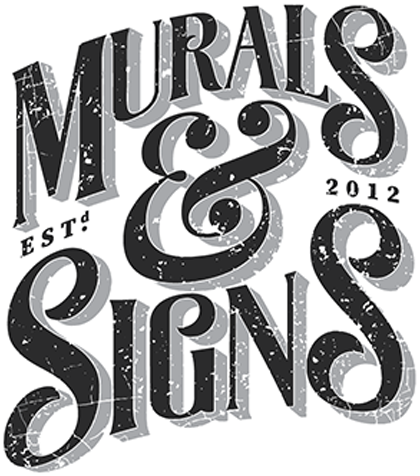In today’s competitive business landscape, effective signage has emerged as a critical component of a company’s marketing strategy. A well-designed and strategically placed sign can captivate potential customers, communicate brand identity, and ultimately drive foot traffic and sales. In this comprehensive guide, we will delve into the art of creating impactful signage layouts for businesses that not only catch the eye but also convey the intended message loud and clear.
The Power of Effective Signage
Signage is more than just a wayfinding tool; it’s a silent spokesperson for your brand. A thoughtfully designed sign can capture attention in a split second, leaving a lasting impression on passersby. This is particularly true in today’s fast-paced world where information overload is the norm. Effective signage not only informs but also elicits emotions and prompts actions.
Understanding Your Audience and Goals
Defining Your Target Audience
Before you even start sketching out your signage layout, it’s imperative to understand who your target audience is. Are they local residents, tourists, or a specific demographic group? Tailoring your sign’s design to resonate with your audience is crucial for its effectiveness.
Setting Clear Goals
What do you want your signage to achieve? Is it to promote a specific product, increase foot traffic, or build brand awareness? Setting clear goals will guide the design process and ensure that every element of the layout serves a purpose.
Elements of Impactful Signage Layouts
Simplicity and Readability
In the world of signage, less is often more. A cluttered sign overwhelms the viewer and dilutes the message. Prioritize simplicity in your layout. Choose legible fonts, contrasting colors, and concise wording. A glance should be enough to grasp the main message.
Visual Hierarchy
Guide the viewer’s eye by establishing a clear visual hierarchy. Place the most important information prominently, whether it’s your brand name, a special offer, or a call to action. Use font sizes, colors, and positioning to direct attention effectively.
Imagery and Graphics
Images speak volumes, sometimes more than words can. Incorporate high-quality images or graphics that align with your brand and message. A well-placed image can evoke emotions and create a memorable experience for the viewer.
Brand Consistency
Consistency is key to building a strong brand identity. Ensure that your signage layout reflects your brand’s colors, typography, and overall aesthetic. This reinforces brand recognition and reinforces the connection between your physical signage and other marketing materials.
Location, Placement, and Size
Location Analysis
Where your sign is placed significantly impacts its visibility. Conduct a thorough analysis of the location’s foot traffic, sight lines, and potential obstructions. A sign hidden from view won’t deliver the desired results, no matter how well-designed it is.
Optimal Placement
Consider the viewer’s perspective when determining the optimal placement of your signage. Eye-level placement is ideal for pedestrian-focused signs, while signs targeting drivers should be easily readable from a distance. Utilize spaces such as storefronts, windows, and entrances for maximum impact.
Size Matters
Bigger isn’t always better, but size certainly matters in the world of signage. The size of your sign should be proportional to its location and the distance from which it will be viewed. An undersized sign might go unnoticed, while an oversized one can appear overwhelming and unprofessional.
Color Psychology and Contrast
Color Psychology
Colors evoke emotions and can influence a viewer’s perception. Understand the psychology behind colors and choose hues that align with your brand’s identity and the message you want to convey. Warm colors like red and orange can evoke excitement, while cool colors like blue and green can signify trust and calmness.
Contrast for Readability
High contrast between text and background is crucial for readability, especially from a distance. Black text on a white background or vice versa is a classic example of strong contrast. Avoid color combinations that hinder legibility and opt for combinations that make your message pop.
Call to Action and Contact Information
Compelling Call to Action
Every effective signage layout should include a clear and compelling call to action (CTA). Whether it’s “Visit Us Today,” “Call Now,” or “Learn More,” the CTA prompts the viewer to take the next step. Use action-oriented language that encourages immediate engagement.
Essential Contact Information
Make it easy for potential customers to reach out to you. Include essential contact information such as your phone number, website, or social media handles. Ensure that this information is prominently displayed and easy to read.
Testing and Iteration
A/B Testing
Even the most well-thought-out signage layout can benefit from testing. A/B testing involves creating variations of your signage and measuring their effectiveness. This could involve testing different colors, fonts, images, or CTAs. Analyze the results to identify which version performs better and refine your signage accordingly.
Adaptation and Iteration
Business environments are dynamic, and your signage should evolve with them. Regularly assess the impact of your signage and gather feedback from customers. If a particular layout isn’t delivering the expected results, don’t hesitate to iterate and make improvements.
Final Thoughts
Creating impactful signage layouts for businesses is both an art and a science. By understanding your audience, setting clear goals, and mastering the elements of effective design, you can craft signs that not only capture attention but also drive desired actions. Remember that signage is a dynamic aspect of your marketing strategy, and ongoing testing and adaptation are essential for long-term success. With a strategic approach, your business can use signage to stand out in a crowded marketplace and leave a lasting impression on your target audience.
